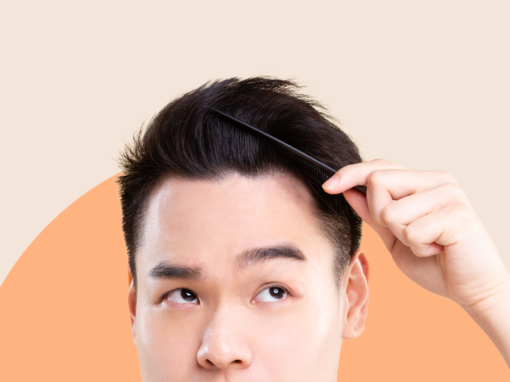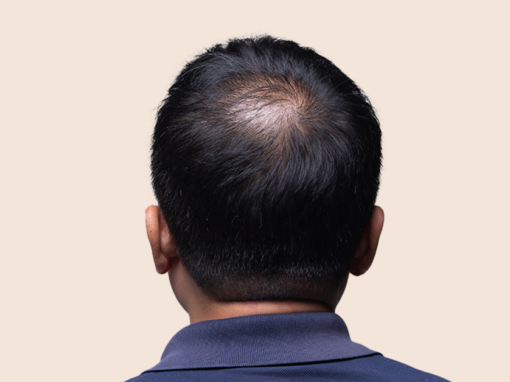Hair follicles are small, tubular structures that make up the hair on your body. They play an important role in the overall health of the skin and hair, providing nourishment to the scalp while helping to control sebum production. Understanding their function and condition can help you identify potential problems before they become serious. By understanding how to keep your follicles healthy, you can enjoy a healthy head of hair for years to come.
Overview of hair follicles
Hair follicles are the root of our hair and can be found all over the body. They are structures that grow and shape the hair and enable it to stay in place. Our hair root is comprised of several layers: a bulb-shaped base known as the dermal papilla, which contains blood vessels and nerves; an inner root sheath composed of cells that grow around the shaft of the hair; an outer root sheath which offers protection from external elements; and finally, a strand of medulla, cortex, and cuticle that form its visible appearance.
The epidermis (outer layer) keeps your skin healthy by providing a waterproof barrier against environmental pollutants. Hair follicle growth is a continuous process and happens in three stages: anagen (active growth phase), catagen (transitional phase), and telogen (resting phase).
The function of hair follicles
The hair follicle function is as follows:
Protection
Hair follicles act as a physical barrier, protecting the scalp from environmental factors such as extreme heat and cold, dirt, dust, and other pollutants. It can also protect against microorganisms that can cause skin infections or hair follicle infections if pulled out.
Temperature regulation
Hair follicles trap air and provide an insulating layer against cold temperatures. When the body senses a temperature rise, the hair follicle is pulled out from the scalp to release heat. Additionally, hair follicles can also protect the body against infection and disease by acting as a barrier.
Aesthetic appeal
The hair follicle helps give the body an attractive form and appeal. It can also protect against environmental factors such as wind and dust, as well as prevent infections. Additionally, it assists in maintaining healthy scalp conditions while providing insulation from extreme temperatures by trapping warmth or cooling effects depending on the season.
Common conditions that affect hair follicles
Clogged hair follicles:
Clogged hair follicles occur when sebum, dirt, and dead skin cells build up in the follicles, causing a blockage that prevents hair growth. This condition can lead to hair loss and a lack of hair follicle regrowth. To reopen hair follicles, you can try using a follicle booster or hair follicle stimulator, which helps to unclog and stimulate hair growth.
Inflamed hair follicles:
Inflammation of the hair follicle, also known as folliculitis, can be caused by bacterial or fungal infections. This condition can lead to red, swollen bumps or pustules, which can be painful and itchy. To treat inflamed hair follicles, you can use over-the-counter antifungal or antibacterial creams, or prescription medications if the condition is severe.
Multiple hairs in one follicle:
Sometimes, hair follicles can produce more than one hair, leading to the development of two hairs in one follicle. While this condition is harmless, it can affect the appearance of hair, making it appear thicker or fuller.
Blocked hair follicles:
Blocked hair follicles occur when hair follicles become clogged with excess sebum, dead skin cells, and other debris. This condition can lead to hair thinning and hair loss. To reopen blocked hair follicles, you can use a hair follicle stimulator or a follicle booster, which can help to unclog the follicles and promote hair growth.
Root hair:
The root hair is the part of the hair that is embedded in the hair follicle. It is responsible for hair growth and is composed of keratinocytes, which are specialized cells that produce the protein keratin. Proper nutrition and hair care can help to support healthy root hair growth.
Hair follicle regrowth:
Hair follicle regrowth can be affected by a variety of factors, including genetics, age, hormonal changes, and medical conditions. To support hair follicle regrowth, you can use a follicle booster or hair follicle stimulator, which can help to promote blood flow and nourish the follicles with essential nutrients. In some cases, hair follicle regrowth may require hair follicle infection treatment.
Conclusion
The hair follicle is a vital part of the body that plays an important role in maintaining healthy hair. It is responsible for producing and cycling new growth, and its condition can be affected by a variety of factors such as age, hormones, genetics, diet, and stress levels. By understanding how your hair follicles work and what can affect them, you can help to maintain their health and condition.
FAQs
What is the anatomy of a hair follicle?
A hair follicle is composed of the root, which is embedded in the skin, and the shaft which extends above it. The upper part of the follicle contains an oil-producing gland known as a sebaceous gland. At the base of the follicle are nerve endings that help to regulate body temperature and sensation.
Can you fix damaged hair follicles?
The only way to address the issue of damaged follicles is through preventive measures such as avoiding harsh hairstyling practices, using nourishing hair products, and getting regular trims.
Do hair follicles grow back?
Hair follicles can regenerate, but only if they have not been destroyed. If the damage is limited to the outer root sheath, new hair growth may be possible. However, follicles that have been damaged beyond repair will not grow back.
This article is for informational purposes only and does not constitute medical advice. The information contained herein is not a substitute for and should never be relied upon for professional medical advice. Book a consultation with andSons medical team to learn more about healthcare treatments here.


